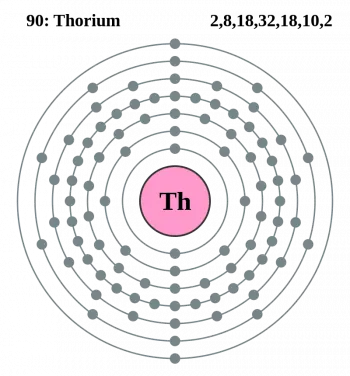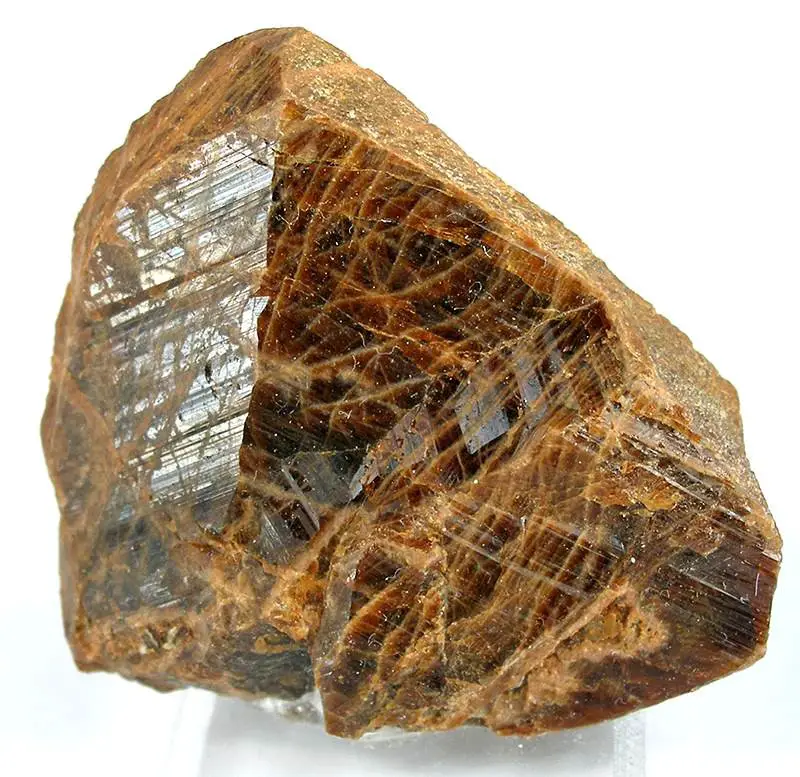
Thorium is a chemical element found on the periodic table with the symbol "Th" and atomic number 90. It is a radioactive metal and is considered a rare earth element.
Thorium is known for its potential as a nuclear fuel. It can be used in nuclear reactors to generate energy through nuclear fission. It is considered an alternative to uranium and plutonium in nuclear reactors, as it has advantages in terms of safety, waste generation, and availability.
Furthermore, this chemical element is more abundant in the earth's crust than uranium, and is found in several minerals, such as monazite and thorianite.
Apart from its use in nuclear energy, thorium is also used in the manufacture of incandescent lamps, in metal alloys, and in the glass industry to improve its strength and quality.
Nuclear power plants running on thorium
Currently, there are no commercial nuclear power plants that exclusively use thorium as fuel. However, there has been research and development in some countries to explore the use of thorium in nuclear reactors.
One of the best known designs is the thorium molten salt reactor (MSR), which uses thorium and fluoride salts as fuel and cooling medium. This type of reactor has been the subject of research and development in several countries, including the United States, China, India, and Canada.
In India, an experimental nuclear power plant called Kamini, which uses thorium in a research reactor, is in operation. However, it is not a large-scale commercial power generation plant.
The exact date when thorium could be used in a full-scale commercial reactor is uncertain and is subject to various factors. Some nuclear power experts and advocates argue that it could be several decades before thorium reactors are ready for large-scale commercial implementation.
Advantages and disadvantages compared to uranium
The use of thorium as a nuclear fuel presents some advantages and challenges compared to uranium. Here is a summary of the main aspects:
Advantages
-
Abundance: Thorium is more abundant on Earth than uranium, which means that there are larger reserves of thorium available.
-
Less nuclear waste: Thorium reactors generate less nuclear waste in the long term compared to uranium reactors. Thorium wastes have a shorter half-life and lower radiological toxicity.
-
Less risk of nuclear proliferation: Thorium fission by-products have a composition that makes it difficult to use for the manufacture of nuclear weapons, thus reducing the risk of nuclear proliferation.
-
Increased Safety: Thorium reactors have features that make them more intrinsically safe. For example, they have a lower probability of core meltdown and can operate at atmospheric pressures.
Challenges and drawbacks
-
Technological Development: Thorium reactor technology is still in development stages and not fully commercialized. More research and development is required to optimize designs and overcome technical challenges.
-
Costs: Developing the infrastructure necessary for the use of thorium as a nuclear fuel can be expensive. Additionally, thorium reactors can be more complex and expensive to build than conventional uranium reactors.
-
Starter Reactor: To use thorium as a fuel, an isotope of uranium or plutonium is usually needed as a "starter reactor" to start the nuclear reaction. This can pose additional challenges in terms of fuel management and safety.
-
Less efficient in certain respects: Although thorium has potential as a nuclear fuel, thorium reactors may be less efficient in terms of electrical power generation compared to uranium reactors.
World reserves
 Estimates of the world's reserves of thorium vary, as precise and comprehensive measurements do not exist in all countries. However, thorium reserves are believed to be significantly larger than those of uranium.
Estimates of the world's reserves of thorium vary, as precise and comprehensive measurements do not exist in all countries. However, thorium reserves are believed to be significantly larger than those of uranium.
Here are some rough estimates of thorium reserves in different regions:
-
India: It is estimated that India has the largest reserves of thorium in the world. According to India's Department of Atomic Energy, the country is estimated to have around 485,000 tons of thorium in its monazite deposits.
-
Brazil: Brazil also has significant reserves of thorium. The country is estimated to have around 302,000 tons of thorium, mainly associated with heavy mineral deposits in soil and sand.
-
Australia: Australia is believed to host considerable reserves of thorium. Although there are no precise estimates, it is estimated that the reserves could be substantial, given the presence of rare earth minerals and monazite in the country.
-
Canada: Canada has significant deposits of thorium, although exact estimates are not publicly available. The reserves are believed to be considerable due to the presence of minerals such as monazite in the country.
Other countries such as Norway, the United States, Malaysia and several countries in Africa are also mentioned as possible holders of thorium reserves, but the exact numbers are not clearly determined.
Thorium Properties
Below is a table with the main properties of Thorium
| Property | Value |
|---|---|
|
Atomic number |
90 |
|
Atomic mass |
232.0377u |
|
chemical symbol |
th |
|
Cluster |
Group 3 |
|
Period |
period 7 |
|
Electronic configuration |
[Rn] 6d^2 7s^2 |
|
physical state |
Solid |
|
Color |
Silver grey |
|
Melting point |
1,750 °C (3,182 °F) |
|
Boiling point |
4,788 °C (8,670 °F) |
|
Density |
11.7 g/cm^3 |
|
Electric conductivity |
good conductor of electricity |
|
radioactivity |
radioactive |
|
Abundance |
More abundant than uranium in the earth's crust |
|
Applications |
Incandescent lamps, metal alloys, glass industry, nuclear fuel (potential) |


